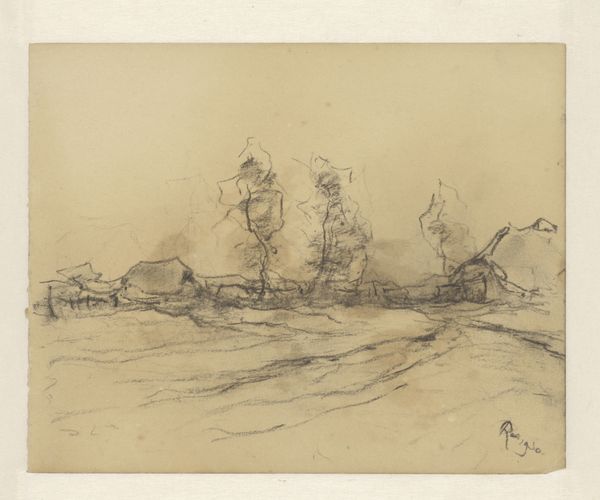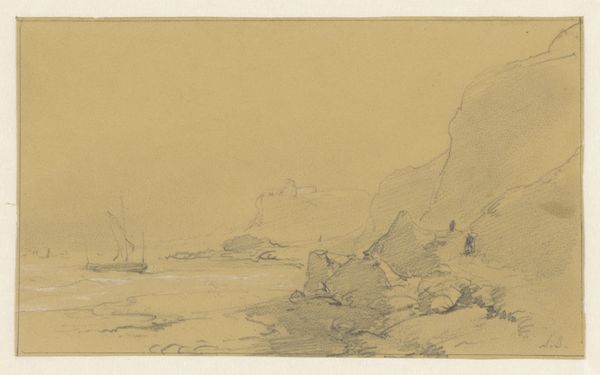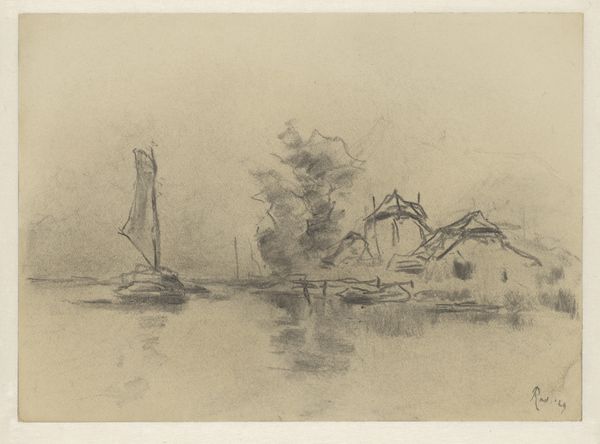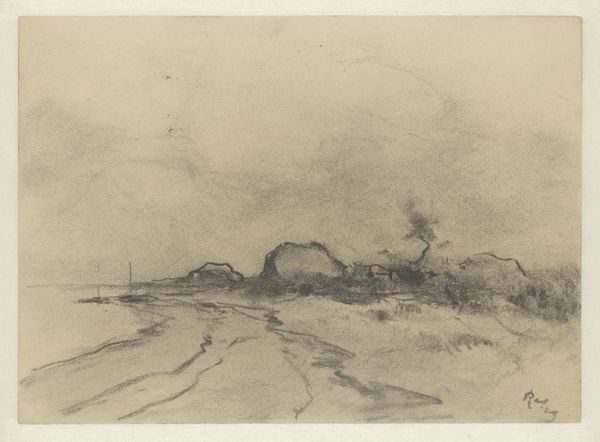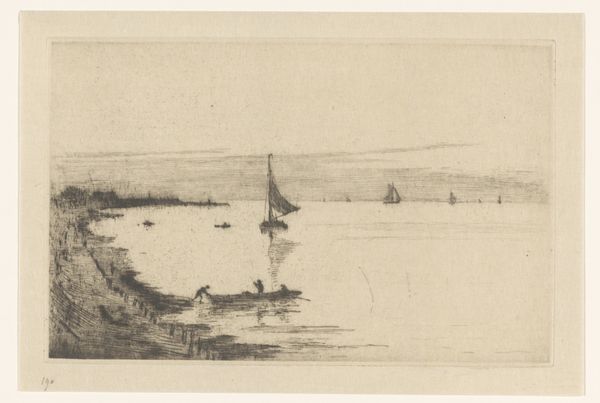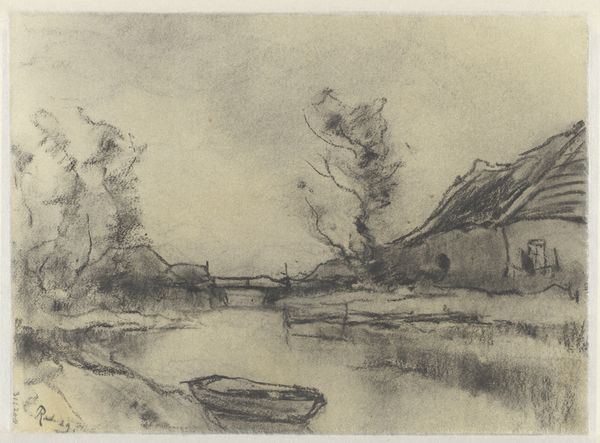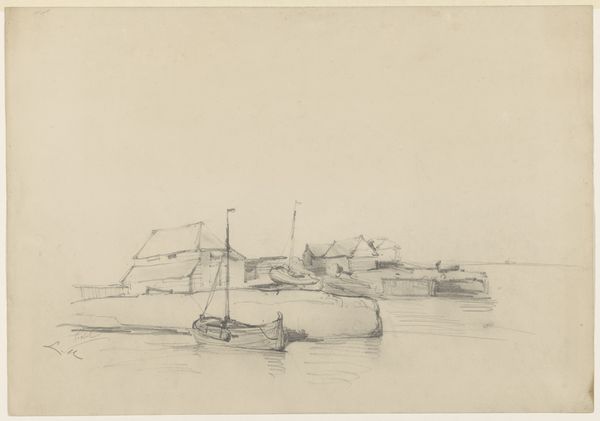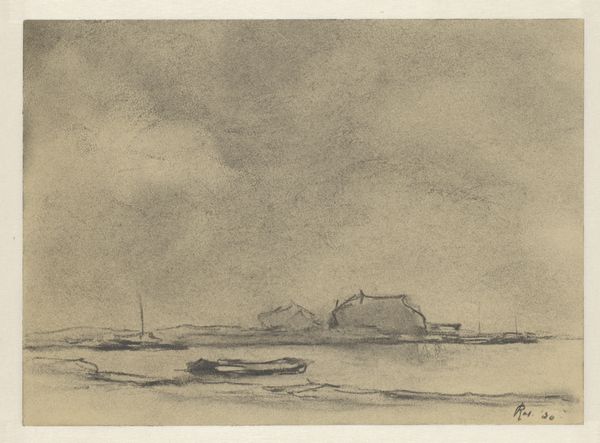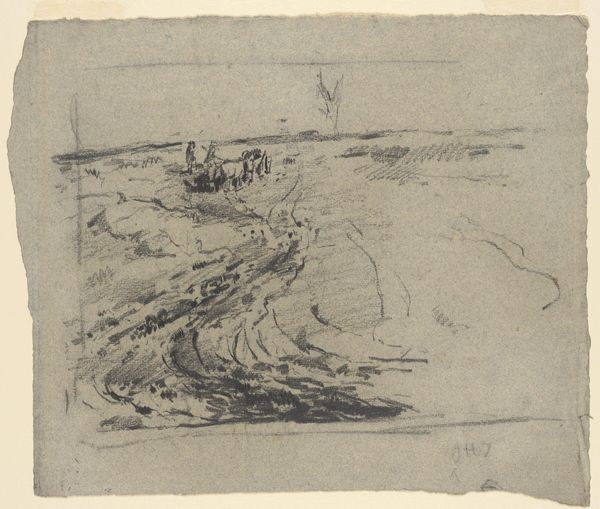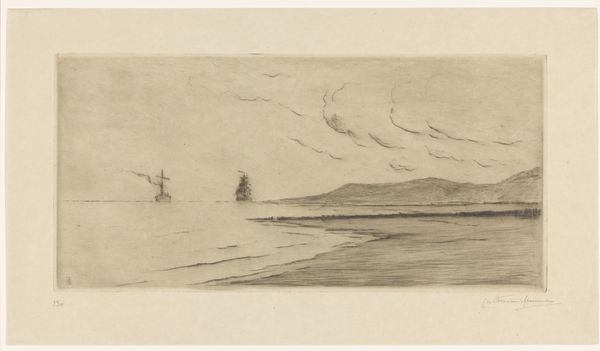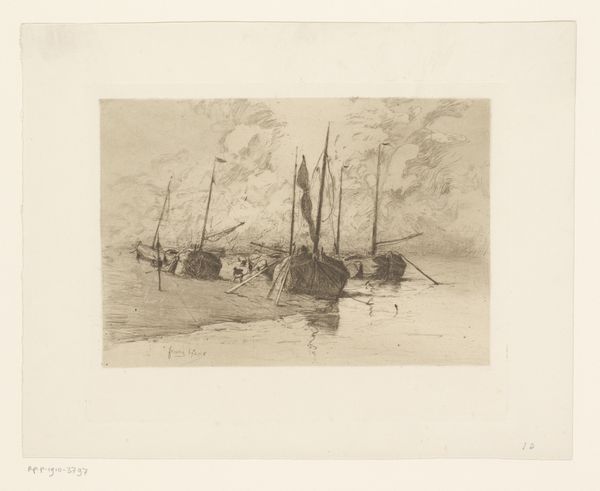
drawing, pencil
#
drawing
#
landscape
#
pencil
#
realism
Dimensions: height 246 mm, width 340 mm
Copyright: Rijks Museum: Open Domain
Editor: This is "Rivierbocht" by Pieter H.J.J. Ras, created around 1930. It’s a pencil drawing. It feels very fleeting, almost like a memory sketched down. What visual echoes do you notice here? Curator: The most striking thing is how the artist has rendered a liminal space – the meeting of land and water. We often find these in depictions of thresholds. And what are thresholds, but powerful cultural symbols of transformation and change? It's not a fully formed landscape but an impression, almost dreamlike. How does this lack of definitive form resonate with you? Editor: It makes me feel a little unsettled, like I'm looking at something unfinished. The soft pencil strokes almost make the forms dissolve. Curator: Precisely. The dissolving forms point to an internal state rather than a purely external reality. Think of the Romantic movement and its fascination with the sublime – the blurring of boundaries between the self and nature. This technique carries an echo of that movement, doesn’t it? The suggestion of a boat also carries strong symbolism – journeys, the unknown, crossings. Editor: That’s true, I didn’t think of that. I was so focused on the hazy technique that I didn’t notice the symbols themselves. So it’s more than just a sketch of a river bend? Curator: Visual representations are never truly neutral, are they? Ras offers us a meditation on perception, on the subjective experience of landscape, rendered with a delicate hand. What new appreciation do you draw from this perspective? Editor: It definitely makes me think more deeply about the choices an artist makes. Every mark carries meaning, intentional or not. Thanks for the insights. Curator: It was my pleasure. Thinking about art and culture with new scholars such as yourself is enriching.
Comments
No comments
Be the first to comment and join the conversation on the ultimate creative platform.

